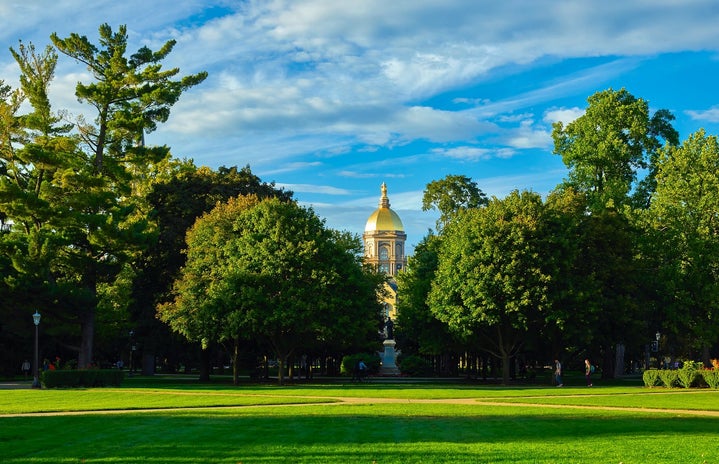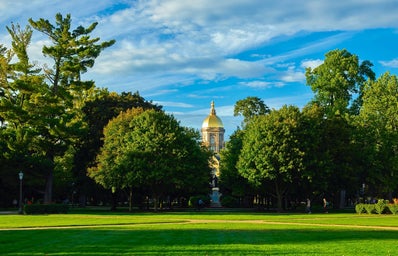Procaffeinating: Coffee for Dumies
I procaffeinate daily. In fact, I even procaffeinated breaking my daily coffee habit, by insisting that I couldn’t give up coffee until after finals. Until after midterms. Until after this cup I’m drinking right now. Finally, Lent rolled around and forty designated days of moderation and the sacrifice of an indulgence were laid out for me. This year I decided to give up my biggest indulgence: coffee. Over the summer I decided my minimum two cups a day was a little excessive. Like any college first-year, I’d entered into a clingy, dependent relationship with my coffee. The consensus among psychologists is that it takes twenty-one days to break a habit [link]. I had nineteen extra days to break-up with my coffee habit.
Let the record show that I went the entire Lenten season without coffee. There were some low moments where Americanos came to the rescue and I may or may not have asked a friend to smell her coffee, but for those forty days and nights I was coffee-free…and I became a little obsessed. Holding the glassy warmth of a mug in the morning was a ritual I craved, and hot lemon water, chai tea, even an americano couldn’t replace my slow-roasted, bitter companion. After a while I started to wonder why exactly was I missing coffee? What did coffee give my body that it was now missing? Where does coffee even come from?
Rather than finding something to take my mind off of my dear friend Joe, I decided to learn as much about coffee as I could and now you can too. Whether you can’t start the day without your cup of ambition or the closest you come to coffee is a frappuccino, here’s far more about coffee than you ever needed to know.
The Legend: Two major origin stories of coffee exist and historians can’t discern which comes first. An Ethiopian legend says that a shepherd named Kaldi discovered caffeine’s effects when they noticed their goats acting a little jumpy after eating coffee berries [source]. (In case you didn’t know, coffee actually comes from berries, not beans. Coffee in it’s natural form is technically a fruit.)
The other origin story comes from Yemen, where it is said that a religious disciple, Omar, who was banished to the desert discovered coffee while on the brink of starvation [source]. Some versions claim that he found the coffee berries and others that a magical bird delivered a branch of coffee berries (or coffee cherries as they are sometimes called) to him. When he took a bit he discovered the bitterness we associate with the drink and threw them into the fire to cook. This time they were too hard, so he boiled them and viola! We have the first cup of coffee.
Your Body on Coffee: When neurons fire they produce Adenosine, which only wants to hang out with certain receptors. These receptors and Adenosine hook up and make us drowsy. If caffeine enters the bloodstream, it will attach itself to the receptors instead. This takes between ten to twenty minutes. At which point, the pituitary gland throws a hissy fit about the receptors cheating on Adenosine with caffeine and tells the adrenal glands to produce adrenaline. The production of adrenaline implicitly means the production of dopamine. Thus, you have a caffeine high. [source]
Espresso Beans are Coffee Beans: Espresso is not a separate plant species. Espresso beans are simply dark roasted coffee beans, and technically they aren’t even called “espresso beans.” They’re just coffee beans. Espresso actually describes the way in which the coffee is prepared, where hot, pressurized water is filtered through finely ground coffee.
Light Roast vs. Dark Roast: A coffee’s roast is a classification of its flavor. The light roasts will have the same amount of caffeine as a dark roast, but a sweet and sometimes floral tone. Coffee aficionados will tell you that the country of origin is more prevalent in the flavor of the bean, because the bean has been roasted for less time, thus flavors and minerals from the soil remain more pronounced. Dark roasts are roasted at higher temperatures for a longer period and is accompanied by a richer, bitter flavor. This is not to be confused with Arabica and Robusat.
Arabica vs. Robusta: There are two species of coffee, but I repeat, they are not the difference between a light and a dark roast! These species are the Arabica, which grows at higher altitudes and had half as much caffeine, and the Robusta, which has a stronger taste and costs on average about half as much. Although Robusta has more caffeine and produces coffee fruit at a much faster rate, about 70% of the world’s coffee is Arabica beans.[link]
“Crema”: This was one of the first words I learned on the job at Starbucks and a basic part of any caféphile’s lingo. The crema is the bubbly, lighter colored, floating layer produced by the high pressure of the espresso machine. Without crema, culture coffee as we know it wouldn’t exist. This little layer is responsible for the texture and flavor of speciality coffee drinks, because of the way it bonds to the proteins in steamed milk.
Drip Coffee: A drip coffee is coarsely ground, uses no pressure to filter and has a crema. It typically has less caffeine than your average cup of coffee or espresso, but the flavor has an entirely different profile. It’s a very in thing among the coffee community right now.
Health Benefits of Drinking Coffee:
-
Coffee drinkers are 65% less likely to develop Alzheimer’s Disease and Dementia
-
Four 8oz cups of coffee a day reduces the chances of type 2 diabetes by 50%.
-
Women who drink two cups a day have a 20% lower risk of stroke.
Coffee and The Planet:
-
Coffee is the second most traded commodity after oil.
-
⅓ of North America’s tap water is used to brew coffee.
-
Scientists are experimenting on coffee as an alternative fuel source.
-
Americans throw away around 25 billion paper coffee cups per year. This equals 9.4 billion trees and 363 billion pounds of waste.
-
Every four coffee disposable coffee cups produces 1 pound of CO2 emissions during manufacturing. It also takes 43 grams of wood, 4.1 grams of petroleum and 1.8 grams of chemicals to create one disposable coffee cup.
-
For every one of us who utilizes reusable coffee mugs 24 trees, 18 straight days of power and 1800 pounds of wood are conserved.
After forty days of pining for the smoky flavor of Peirce’s slightly burnt coffee, I had to come to terms with the fact that my coffee little habit has a big impact. The more you know about your coffee, where it comes from, how it’s made, the more global coffee’s impact becomes in your eyes. Land must be cultivated to farm the beans, the trees to produce paper for cups, factories to process beans, and fuel to power the factories, cars and kitchens.
Java is global. For better or for worse, the coffee industry encompasses much more than we can see when we reach for our morning mugs. The peirce cups are disappearing, but the coffee industry isn’t. Every morning we can help to lessen the effects of this by reaching for a reusable mug and fair trade coffee beans at our local coffee shops. We don’t need to break up with coffee, just reconsider the ways we consume or produce our daily cup o’Joe.
Image Credit: Coffee Berry, Quotes & Frases on Pinterest, David Thomas on Pinterest, Giphy, Imgur, Cape cod Collegiate on Tumblr

